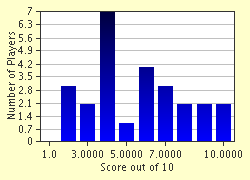Quiz Answer Key and Fun Facts
1. As the Mauritian national motto suggests, this island nation can be found in what ocean?
2. A close look at the names of Mauritian locations will show that they come from several different languages, having been established by various colonial powers. Which of these was NOT in control of Mauritius at any time between 1638 and 1968?
3. This shrine, part of a temple complex located at the edge of a crater lake called Ganga Talao, is used by members of the dominant religion of Mauritius. Which of these is it?
4. Sovereignty over the Chagos Archipelago has long been disputed between Mauritius and the United Kingdom. What is the name of the largest island in the archipelago, which is used by the United States as a naval and military base?
5. What type of island is the main island of Mauritius?
6. We all know that the dodo, a flightless bird once endemic to Mauritius, is extinct, victim of the impact of human activity on its fragile ecosystem during the 17th century. Which of these is its closest living relative?
7. Which of these birds that can be found only on Mauritius has not (yet) come close to extinction, and is the most widely-seen endemic species on the islands?
8. Because the Mauritian native giant tortoise species had all become extinct, it was decided to import a suitable species to the Pamplemousses gardens and some other areas of indigenous vegetation. From what nearby country were Aldabra giant tortoises imported?
9. Because it is a small island in the middle of the ocean, Mauritius has no native terrestrial mammals.
10. What is the name of the area, shown here, that contains almost all that remains of the native rainforests of Mauritius?
Source: Author
looney_tunes
This quiz was reviewed by FunTrivia editor
agony before going online.
Any errors found in FunTrivia content are routinely corrected through our feedback system.


